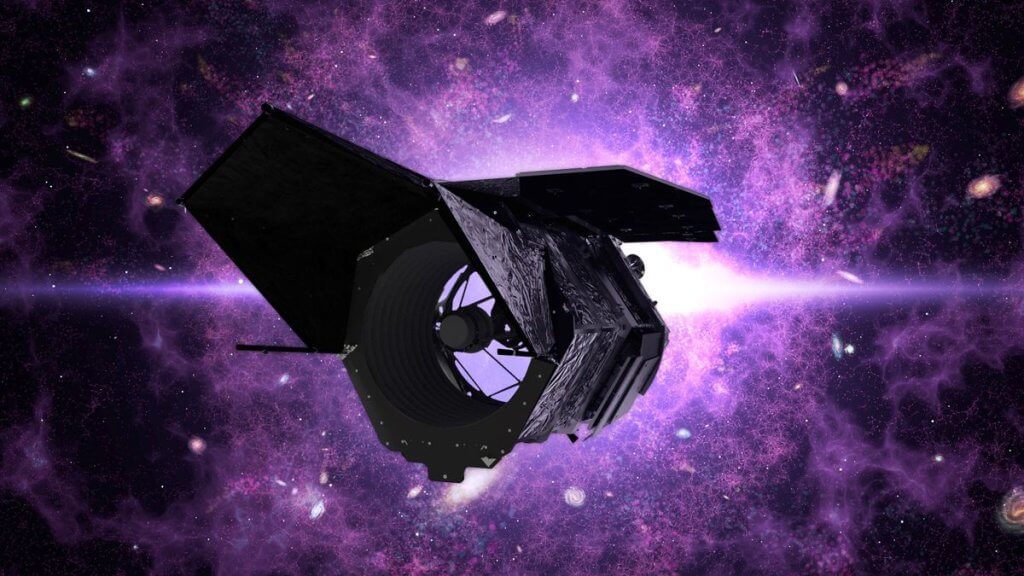NASA has revealed how its next big space telescope will allow astronomers to peer deeper than ever before into the heart of the Milky Way after it launches in May 2027.
According to the space agency, the Nancy Grace Roman Telescope, or just Roman, will provide an unparalleled view of the center of our galaxy, facilitating the hunt for objects ranging from stars, planets, and icy bodies to isolated black holes. It will do this by monitoring millions of stars in our cosmic backyard and looking for the tell-tale flickering that indicates something might be passing between its vantage point and these stellar bodies.
NASA added that Roman will also have a significant impact on the study of the universe and how it changes over time, called “time-domain astronomy,” thanks to its long-term monitoring of wide swathes of the sky over Earth.
Related: NASA’s Roman Space Telescope will launch in 2027. Here’s how scientists are getting ready
To help it hunt for distant objects, Roman will conduct a survey known as the Galactic Bulge Time-Domain Survey, which will use the telescope’s infrared vision to stare through clouds of dust and gas that usually block our view of the central bulge of the Milky Way where a vast amount of its stars are concentrated. Infrared is useful to do this because it passes through these clouds, unlike visible light, which is absorbed by them.
“Roman will be an incredible discovery machine, pairing a vast view of space with keen vision,” Roman senior project scientist Julie McEnery said in a NASA statement. “Its time-domain surveys will yield a treasure trove of new information about the cosmos.”
Roman will also make use of a phenomenon called microlensing, predicted by Albert Einstein in his theory of general relativity, which says that objects of tremendous mass “warp” the fabric of spacetime. As light travels past this warp, it is curved, and this can amplify the image of a background light source.
Roman will use this to hunt microlensing events happening as a planet moves in front of a star in the background, lensing it and causing a temporary increase in brightness. The telescope will conduct the Galactic Bulge Time-Domain Survey by taking an image of this central region every 15 minutes for two months. This observing campaign will be repeated six times over the five-year primary mission of Roman, creating combined observations amounting to over a year.
“This will be one of the longest exposures of the sky ever taken,” Ohio State University physicist Scott Gaudi, whose research is helping inform the strategy Roman will employ. “And it will cover territory that is largely uncharted when it comes to planets.”
Roman could reveal over 1,000 planets orbiting the parent stars at large distances and in planetary systems located further away from Earth than ever before. In fact, NASA is already predicting that the observing power of Roman will help set a new record for the most distant extrasolar planet, or “exoplanet,” ever discovered by humanity. Planets in the hitherto unexplored reaches of the Milky Way could be vastly different than the over 5,000 worlds currently featured in the exoplanet catalog.
In addition to spotting exoplanets in the habitable zone of their stars, defined as the region neither too hot nor too cold to support liquid water, Roman could also spot free-floating or “rogue” planets not associated with a parent star using microlensing.
Using Roman, astronomers will also be able to determine which types of star systems, such as binary stars that orbit one another other, are most likely to host worlds around them. This will build on investigations already begun by NASA’s Kepler Space Telescope and Transiting Exoplanet Survey Satellite (TESS).
In addition to exoplanets, Roman will be hunting for more exotic objects, including brown dwarfs, the “failed stars” that form in the same way as stars but do not gather enough mass to trigger the nuclear fusion of hydrogen to helium — the process that defines a star. This investigation could help scientists determine more accurately where the boundary between brown dwarf and star is drawn.
As one might expect for such a powerful space telescope, Roman will also make a significant impact in the hunt for neutron stars — stellar remnants that form when massive stars die, and their cores collapse to create the densest material in the known universe. The next-generation space telescope is projected to spot a thousand neutron stars or more.
A similar process involving the most massive stars occurs to birth stellar mass black holes, but these are tougher to spot because they trap light behind a one-way boundary called an event horizon. That means that if they are not surrounded by matter to feast on, which they heat to incredible temperatures to emit electromagnetic radiation, black holes are effectively invisible.
Yet these isolated stellar mass black holes still have mass and, therefore, still warp spacetime, meaning Roman can still use microlensing to hunt them when they pass in front of a background star.
Roman will have investigate non-failed and non-dead stars, too, as it will allow astronomers to conduct “stellar seismology” on around a million giant stars through analyzing brightness changes as sound waves travel through their interiors. This could teach scientists more about the structure, age, and other characteristics of stars.
The space telescope will also have uses much closer to home than these distant star systems, watching as icy bodies in the Kuiper Belt at the edge of the solar system beyond Neptune reflect sunlight or block the light from background stars.
As such, Roman promises to deliver an incredible wealth of scientific discoveries, vastly broadening our understanding of the Milky Way and painting an evolving picture of the ever-changing cosmos.

